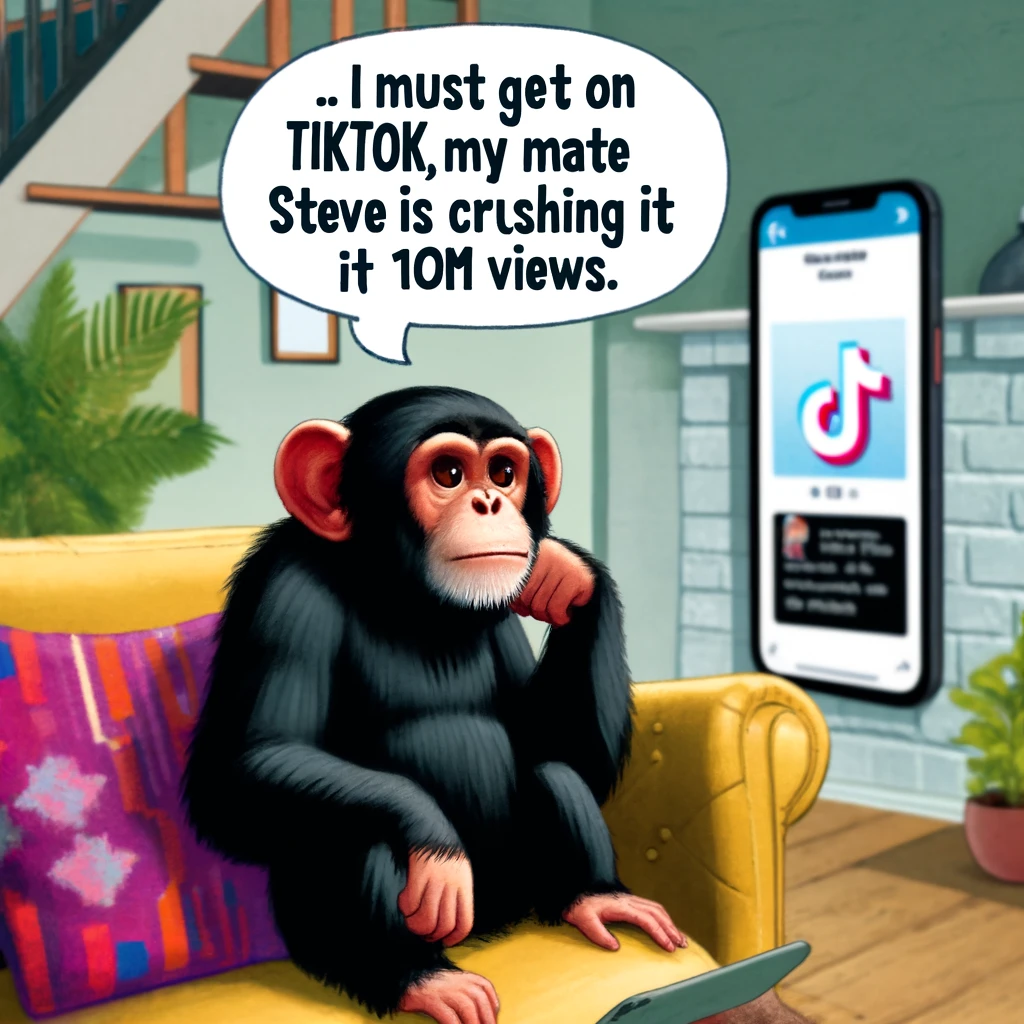Ah, TikTok, the dazzling, dizzying digital darling of our age. A place where you can watch a pomeranian trying a lemon for the first time and, in the same breath, be subtly persuaded to buy a lemon-scented dog shampoo.
This platform, an endless fountain of creativity and chaos, has become the perfect playground for clickbait and dogwhistle marketing. So, let’s embark on this merry-go-round of musings to understand why TikTok reigns supreme in the land of attention-grabbing and subliminal messaging.
First off, TikTok’s very essence—the short, punchy, video format—caters to the goldfish-like attention spans of today’s internet users. It’s the digital equivalent of a flashy billboard in Piccadilly Circus, but instead of one billboard, you have millions, all clamouring for your attention with the brightest lights and boldest letters.
In this environment, clickbait doesn’t just thrive; it evolves. It becomes smarter, sneakier, and more sophisticated, perfectly engineered to make you stop, stare, and, ideally, swipe up.
But what makes TikTok a breeding ground for these tactics? It’s all about the algorithm, baby. This mysterious, all-knowing beast seems to understand what you want to watch better than you do. It feeds you a never-ending stream of content tailored to your deepest desires (or at least the ones you express through your viewing habits).
Marketers, aware of this, craft their content to exploit the algorithm’s preferences, using sensational titles, eye-catching thumbnails, and the first few crucial seconds of the video to hook you in.
Before you know it, you’re watching a 20-part saga about a man trying to train his cat to use a human toilet.

Dogwhistle marketing on TikTok, on the other hand, is like the platform’s secret handshake. It’s subtle, it’s nuanced, and if you know, you know.
This form of marketing uses seemingly innocuous phrases, symbols, or music that carry a specific message to a targeted group without being overtly obvious to outsiders. It’s the whisper in the wind that says, “Hey, this is for you,” without actually saying it.
In a landscape where overt selling can be a turn-off, these coded messages become the secret sauce for brands aiming to connect with niche audiences.
And let’s not forget the power of the TikTok community. This isn’t just any audience; it’s a hyper-engaged, vocal, and often fiercely loyal tribe. When a trend takes off, it doesn’t just fly; it soars into the stratosphere, carried by the wings of millions of users all too happy to add their own spin on it.
Marketers drool over this kind of organic engagement, using it to amplify their clickbait and tired messages far beyond what paid advertising could achieve.
But it’s not all sunshine and rainbows. The dark side of TikTok’s marketing magic is that it often veers into the realm of misinformation or exploit vulnerable audiences. The platform has had its fair share of controversies, from dangerous challenges to the spread of misleading health advice.
It’s a wild west, and while the sheriff (aka TikTok’s moderation team and/or the Chinese government) is certainly in town, they can’t catch every outlaw.
So, TikTok is the perfect medium for clickbait and dogwhistle marketing, not because it’s a den of sin and villainy, but because it’s a vibrant, dynamic ecosystem where creativity and psychology meet. It’s a place where you can go from watching a 60-second recipe to impulsively buying a blender at 2am.
The trick for marketers (and savvy consumers) is to navigate this landscape with a critical eye, recognizing the fine line between engaging content and manipulative tactics.
As for TikTok, it continues to dance on the edge of innovation and controversy, a testament to the complex, captivating nature of social media in our lives.
Just remember, the next time you find yourself going down a TikTok rabbit hole, there’s a good chance someone, somewhere, is subtly trying to sell you a lemon-scented dog shampoo. And you might just buy it.
